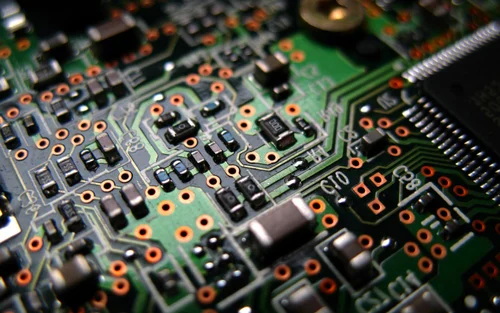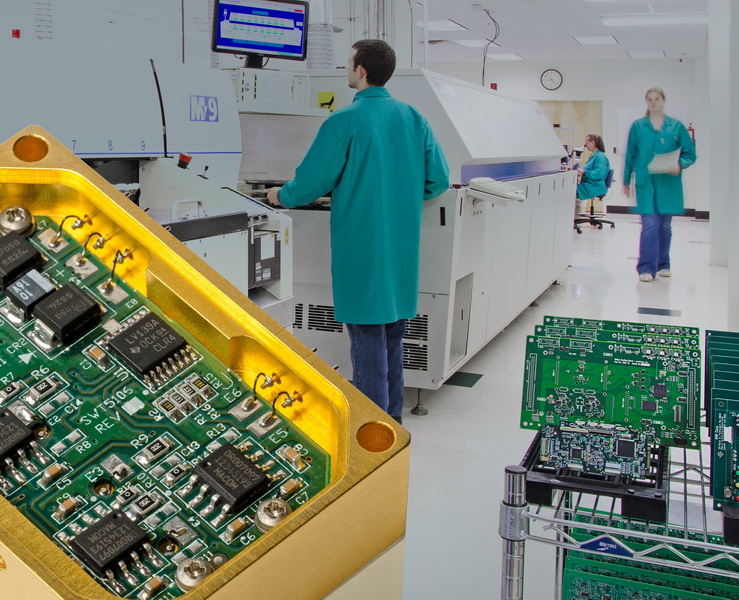Content Menu
● What is an Automatic SMT PCB Loader?
>> Key Features of Automatic SMT PCB Loaders
● Components of an Automatic SMT PCB Loader
● How Does an Automatic SMT PCB Loader Work?
>> Step-by-Step Process
>> Advanced Features in Modern Loaders
● Benefits of Using an Automatic SMT PCB Loader
>> 1. Increased Efficiency
>> 2. Enhanced Accuracy
>> 3. Cost Savings
>> 4. Improved Safety
>> 5. Versatility
>> 6. Consistent Quality
● Applications of Automatic SMT PCB Loaders
● Challenges in Operating Automatic SMT PCB Loaders
● Conclusion
● Frequently Asked Questions (FAQ)
>> 1. What is the primary function of an automatic SMT PCB loader?
>> 2. How does an automatic SMT PCB loader improve production efficiency?
>> 3. Can an automatic SMT PCB loader handle different PCB sizes?
>> 4. Is it compatible with other SMT equipment?
>> 5. What safety features are included in automatic SMT PCB loaders?
The automatic SMT PCB loader is a critical piece of equipment in the Surface Mount Technology (SMT) production line. It automates the process of loading printed circuit boards (PCBs) onto the production line, significantly improving efficiency, accuracy, and reducing manual labor. This article explores how an automatic SMT PCB loader works, its components, benefits, and common applications in modern manufacturing.

What is an Automatic SMT PCB Loader?
An automatic SMT PCB loader is a machine designed to load PCBs onto an SMT production line. It operates by transferring PCBs from a magazine or stack onto the conveyor system of downstream equipment such as stencil printers or pick-and-place machines. This process eliminates manual handling, thereby reducing the risk of damage to PCBs and enhancing production efficiency.
Key Features of Automatic SMT PCB Loaders
1. Automated Loading: Automatically pushes PCBs from a magazine onto the conveyor.
2. PLC Control System: Ensures precise operation using programmable logic controllers.
3. Touchscreen Interface: User-friendly interface for easy configuration and monitoring.
4. SMEMA Compatibility: Enables seamless communication with other SMT equipment.
5. Adjustable Parameters: Allows customization of PCB size, transfer speed, and direction.
6. Compact Design: Saves space on the production floor while maintaining high functionality.
Components of an Automatic SMT PCB Loader
The functionality of an automatic SMT PCB loader relies on its well-designed components:
1. Magazine Rack: Holds PCBs in a vertical stack or horizontal arrangement.
2. Pneumatic Clamps: Secure the magazine to prevent movement during operation.
3. Conveyor System: Transfers PCBs to downstream machines.
4. Lifting Platform: Adjusts height to align with the conveyor system.
5. Sensors and Alarms: Detect errors or misalignments and provide alerts.
6. Control Panel: Offers manual and automatic operation modes for flexibility.
7. Push Plate or Suction Mechanism: Moves PCBs from the magazine to the conveyor with precision.
Each component works cohesively to ensure smooth and error-free operation, making it possible for manufacturers to achieve consistent results.
How Does an Automatic SMT PCB Loader Work?
Step-by-Step Process
1. Initialization:
- The operator powers on the machine and configures settings such as PCB size, transfer speed, and direction via the touchscreen interface.
2. Magazine Loading:
- PCBs are loaded into the magazine rack, which is secured with pneumatic clamps.
3. Alignment and Positioning:
- The lifting platform aligns the first PCB with the conveyor system.
4. Automatic Transfer:
- Using a push-plate mechanism or suction system, the loader transfers the PCB onto the conveyor.
5. Integration with Downstream Equipment:
- The loader communicates with downstream machines (e.g., stencil printers) via SMEMA interfaces to ensure smooth workflow.
6. Error Detection and Correction:
- Sensors monitor operations for misalignments or jams, triggering alarms if issues occur.
Advanced Features in Modern Loaders
Modern automatic SMT PCB loaders have evolved to include advanced features such as:
- Real-Time Monitoring Systems:
These systems track every stage of the loading process and provide instant feedback on performance metrics.
- Error Recovery Mechanisms:
In case of a jam or misalignment, some loaders can automatically correct errors without halting production.
- Energy Efficiency Modes:
Many loaders now include energy-saving modes that reduce power consumption during idle times.
These advancements make automatic SMT PCB loaders more reliable and suitable for high-speed production environments.

Benefits of Using an Automatic SMT PCB Loader
1. Increased Efficiency
By automating repetitive tasks, an automatic SMT PCB loader reduces cycle times and boosts throughput in production lines. This allows manufacturers to meet tight deadlines without compromising quality.
2. Enhanced Accuracy
Manual handling can lead to misaligned boards or damage during transfer. Automatic loaders ensure precise alignment and gentle handling, minimizing errors and defects.
3. Cost Savings
Although there is an initial investment in purchasing an automatic SMT PCB loader, it quickly pays off by reducing labor costs and increasing productivity over time.
4. Improved Safety
By limiting direct human interaction with machinery, automatic loaders reduce risks associated with manual handling, such as injuries from repetitive strain or accidents during board placement.
5. Versatility
Automatic SMT PCB loaders are highly adaptable to various production requirements. They can handle different sizes, shapes, and thicknesses of PCBs without requiring significant modifications.
6. Consistent Quality
Automation ensures uniformity in operations, leading to consistent quality across all products manufactured on the line.
Applications of Automatic SMT PCB Loaders
Automatic SMT PCB loaders are widely used in industries that require high-volume electronics manufacturing:
- Consumer Electronics:
Devices like smartphones, tablets, laptops, and smartwatches rely on efficient assembly lines powered by automatic loaders.
- Automotive Electronics:
Modern vehicles contain numerous electronic components for navigation systems, sensors, and infotainment systems that are assembled using automated equipment.
- Medical Devices:
Precision is critical in medical device manufacturing; automatic SMT PCB loaders help maintain high standards while meeting production demands.
- Industrial Automation Systems:
From robotics to control panels, industrial automation systems often involve complex PCBs that require careful handling during assembly.
- Telecommunications Equipment:
Routers, switches, and other networking devices benefit from automated loading processes that enhance reliability and speed up production timelines.
Challenges in Operating Automatic SMT PCB Loaders
While these machines offer numerous benefits, they also come with challenges:
1. Initial Investment Costs:
- Purchasing high-quality automatic loaders can be expensive for small-scale manufacturers.
2. Maintenance Requirements:
- Regular maintenance is necessary to ensure optimal performance and prevent downtime.
3. Operator Training:
- Operators must be trained to configure settings accurately and troubleshoot minor issues when they arise.
4. Compatibility Issues:
- Some older production lines may face compatibility challenges when integrating modern automatic loaders without SMEMA interfaces.
Despite these challenges, advancements in technology continue to make these machines more accessible and user-friendly for manufacturers across industries.
Conclusion
The automatic SMT PCB loader is indispensable in modern electronics manufacturing due to its ability to streamline operations, enhance precision, and reduce costs. By automating the loading process at the start of an SMT production line, it ensures smooth workflow integration with other machines like stencil printers and pick-and-place systems.
With advancements in technology, these loaders are becoming more sophisticated, incorporating features like advanced PLC control systems and real-time error detection mechanisms to meet the demands of high-speed production lines. For manufacturers aiming to stay competitive in today's fast-paced market, investing in an automatic SMT PCB loader is a strategic decision that pays off through increased efficiency and consistent product quality.

Frequently Asked Questions (FAQ)
1. What is the primary function of an automatic SMT PCB loader?
The primary function is to automate the loading of PCBs onto an SMT production line by transferring them from a magazine or stack to downstream equipment like stencil printers or pick-and-place machines.
2. How does an automatic SMT PCB loader improve production efficiency?
It reduces manual handling time, minimizes errors during board placement, and allows continuous operation through automated processes.
3. Can an automatic SMT PCB loader handle different PCB sizes?
Yes, most loaders are designed with adjustable parameters to accommodate various sizes and thicknesses of PCBs.
4. Is it compatible with other SMT equipment?
Yes, most loaders feature SMEMA interfaces that enable seamless integration with other equipment such as conveyors, reflow ovens, and inspection systems.
5. What safety features are included in automatic SMT PCB loaders?
Safety features include pneumatic clamps for securing magazines, sensors for error detection, acoustic-optic alarms for alerts, emergency stop buttons, and protective covers to prevent accidental contact with moving parts.




















